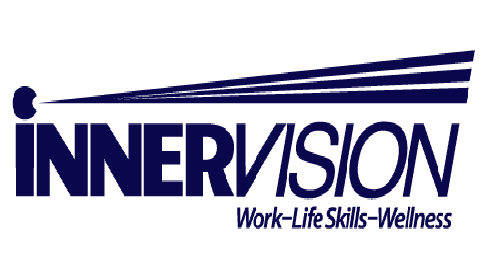
16 May InnerVision’s SNAP site helps hardest-to-serve populations get back to work
“So many of the people we serve don’t even think they can make it in the workplace,” says Dr. Cheryl Nicholas, CEO and director of InnerVision. “But they have the desire to work. Human beings feel better when they’re supported, so we create a safety net for individuals’ vocational aspirations.”
The 11-year-old organization provides employment support, education and personal wellness skills for people challenged by trauma, mental health issues, addiction and criminal backgrounds (or what Nicholas calls “colorful histories”) to help them become productive citizens in the community through meaningful work. To quote its website, it’s a “one-stop recovery and employment center.”
InnerVision is one of Charlotte Works’ 30 SNAP sites, collaborations that extend job-search resources into the community to reduce barriers to employment.
And InnerVision’s clients have some of the most difficult barriers to employment to overcome, making the SNAP partnership a good fit, says Nicholas.
She and her 14-person staff offer clients of all socio-economic backgrounds “supportive employment services” that begin with an assessment of both their desire to work and their skill sets. “How are we going to bridge the gaps between your skills and employer needs, and are you committed to what you say you want to do?” says Nicholas. “We’re no ordinary JobLink because we put a lot of time in on the front end with assessments and focusing on career development for people with very limited or no work histories. What makes us really unique is that in most job-readiness programs, you get assessed to be ‘ready;’ we don’t do that. We meet people where they are.”
Following the initial assessments, InnerVision develops an individual “person-centered plan” for each client that, depending on needs, could include job coaching, developing career profiles, competency testing, GED/adult education, soft skills training, human resources development, access to clinicians and therapists, group counseling, individual therapy, a regular physical fitness program at the onsite gym, community outings and more.
“We’re trying to get people into the workplace as quickly as we can so their issues aren’t compounded,” Nicholas explains. “The challenges of these individuals don’t affect only one life domain – unemployment affects your stress level, your financial situation, your goals and your personal relationships both on and off the job. Employment is huge in terms of transforming their lives and the life of the community.”

Carmen Lopez, a certified peer employment specialist at InnerVision, works in the organization’s SNAP site, or “work achievement place,” as it’s called. On the wall to her left are paper trophies placed there by clients who’ve landed.
Another particularly unique aspect of InnerVision’s program is identifying clients whose “greatest asset is their journey,” says Nicholas. Through a partnership with the departments of health and human services of the state of North Carolina and UNC Chapel Hill, InnerVision trains clients to become certified peer support specialists who use their own experiences to help others in similar situations. The certification provides a viable route to a career as a behavioral health specialist without the time and cost associated with a degree program. InnerVision has placed peer support specialists at mental health and substance abuse agencies, insurance companies – and in-house. Nicholas says one-third of the staff are certified peer support specialists.
Currently, InnerVision is serving about 400 clients across all programs.
It began offering actual job placement services, not simply job-readiness programs, in June 2013. Since then, InnerVision has engaged 56 clients with employers and placed 35. “This is a huge number in a short period of time for a population whose unemployment rate hovers around 85 percent,” Nicholas notes.
She says much of InnerVision’s work is done on the employer side as well, helping them to overcome preconceived notions about hiring people diagnosed with a mental illness and other challenges.
“Employers think if they hire these people, it’s going to create additional challenges in the workplace. They think of the individuals we serve as persons who are lethargic and taking meds, but when you’re engaged, you have energy and you’re moving around being productive. We point out that one in four people has a mental health issue, so they probably already have mental health issues in their workplaces,” says Nicholas. “We help them engage with individuals diagnosed with a mental illness differently and proactively. We partner with employers to become better skilled at recognizing when their healthier employees might have issues – in effect, InnerVision becomes an offsite EAP [employee assistance program].”
Nicholas and her staff also work to educate employers about the incentives available to them for hiring people with disabilities.
InnerVision’s programming seeks to address many of the skills employers tell the organization’s employment specialists they need, such as technology. The building is wired for wi-fi and has a computer lab and a “smart room” with drop-down projectors and screens.
“Employers say they have to have basic engagement with technology, so we integrate it into the program so that’s not another barrier for our clients,” Nicholas says. “The workplace has changed. Even entry-level jobs are more demanding now. A decade ago, it was singular in terms of competencies and now, you need competency in technology, multi-tasking and decision-making capabilities.”
InnerVision’s support doesn’t simply end when clients are placed into employment. It links them to vocational specialists and job-support groups for as long as needed to provide a safe environment to work through workplace challenges.
“Everyone wants to feel valued,” Nicholas notes. “And when we support and value each other and the work we do, it creates a better and healthier community for us all.”


